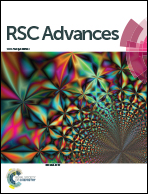Response to chemical induced changes and their implication in yfdX proteins
Abstract
yfdX proteins occur in a large number of virulent bacteria. Recently we have shown that STY3178, a yfdX protein from Salmonella Typhi, exists in a trimeric state in solution which is capable of interacting with antibiotics, stable at elevated temperatures and undergoes reversible thermal unfolding. In this present study, we report the chemical response of STY3178. We monitor the stability of the protein in presence of chaotropes. It can regain the native-like structure from the chaotrope induced unfolded states. The structural stability of this protein is further studied in a wide pH range which reveals that the STY3178 trimer is stable in both acidic as well as basic media. We further show that the protein interacts with oxalate in vitro. Finally, we perform computational studies viz. modeling and molecular dynamics simulation to understand the stability of trimeric STY3178 over its monomer conformation. The conformational thermodynamic changes indicate that oligomerization induces stability via salt bridge interactions, present at the monomer interface.


 Please wait while we load your content...
Please wait while we load your content...